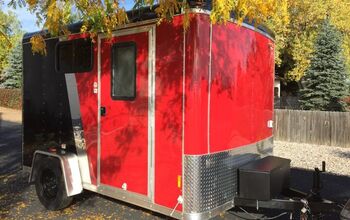How to Start Investing in a 401k With Just $25: A Quick Start Guide

So many people wonder how to leap into investing; they don't want to lose all their money or get their money locked into a situation they can't get out of without penalties or taxes. I'm going to share with you my investing quick start guide.
Invest in a 401k
My first step to investing was with the 401k plan in the first company I was with. I started investing $25 biweekly, or $50 a month.
$1,252 was what I ended up taking away from my 401k once I left that company. That $50 monthly investment was over a year's time. At the end of the year, I was at $1,252 when I left that company. That was in 2019.
That $1,252 I left with in 2019 is almost $2,700 in two years. I'll add one caveat to that. I did roll over $500 from another 401k plan into this account. Even with the rollover, I've made a profit of an additional $1,000 from my first 401k proceeds.
Before starting my investing journey, there were some foundational pieces that I would need to have in place:
1. Have a budget
The first was having a budget that I could stick to and practicing good money habits. If you spend more than you're earning or don't make enough money to pay your bills, you can't even think about investing.
2. Have savings
The second thing that was important to me was to have savings. We
all know how things can happen unexpectedly, such as job loss.
If you don't have money to cover things like deductibles for insurance or your medical needs, you'll end up using credit cards or just going into debt in some other way. To ensure we're in a good place, we have to make savings a priority.
3. Pay off credit cards
The following foundational item was to pay off that high-interest credit card debt. I was dumping money into interest on a credit card when I could use that money to invest or save.
For more ideas for getting your finances in order before thinking about investing, see my previous post on 5 bad money habits that make you lose money.
Once I could get my financial foundation set, I started exploring investing.
401k investing
My investing journey started with a 401k plan, which made the most sense for me. One of the driving factors behind that decision was I received an immediate match on my 401k contribution. There can be vesting schedules associated with 401k plans, where any company contribution may not be yours immediately.
While your employer's contribution may show in your retirement fund if you quit the company or get fired, it may not be yours to keep if you have a vesting schedule.
Once I landed on a dollar amount I wanted to invest and was happy with the match, I had to decide where to put my money.
Target date funds
Frequently 401k plans will offer what's called a target date fund, which is the fund I chose to invest my money in. The target date fund is a fund that's based on your retirement year.
If you were looking at a target date fund to invest in, you would want one that would match up with the year in which you turn 65. The fund comprises all different types of stock, including a real estate investment trust, which is a way to get invested in real estate without having to buy a house.
I chose the target date fund because it took the heavy lift of investing out of the picture. This fund was diversified, which made it attractive to me.
I was also drawn to the target date fund because it does rebalancing for you. As we get closer to retirement age, our investments should change. The asset allocation mix should move from predominantly stock to safer investments like bonds.
The balancing, how it's done, and when it's done is driven by the financial institution behind your target date fund.
Tax advantages
A benefit to the 401k plan is the tax advantages. A 401k reduces your taxable obligation or the income on which your taxes are derived. You are not taxed on the money you put into your 401k.
You are getting around the tax obligation in the current time period. The idea is that your tax bracket is probably higher now while you're working than it will be when you turn 65. You are deferring your tax obligation on the money you've contributed and the money that has grown in your account to a point in which, as a retiree, you will be in a lower tax bracket.
How to start investing
Investing in my 401k was as simple as going to my company's 401k plan website (I got that information through my HR department). I created an account, and the plan let me select what percentage of my gross pay I wanted to invest. Once I set that up, all of it started working in my next pay period. I saw it on my pay statements immediately.
401k loans
The last thing I want to discuss is 401k loans. I suggest using these only in worst-case scenarios. This is not a way to get cash quickly to cover your vacation expense. Still, suppose you need emergency cash and have already gone through your emergency savings or other liquid cash options. In that case, the 401k loan might be a better alternative than getting a loan from a bank or a credit union.
How to start investing with a 401k
I have touched on what I think is essential in how to start investing with a 401k. Remember to get your finances in order, have a savings fund, then check to see if your employer offers a 401k plan. If they do, it could be the best way for you to start investing.





















Comments
Join the conversation